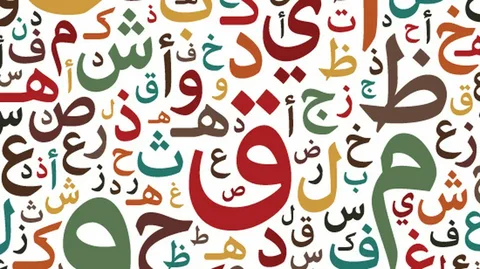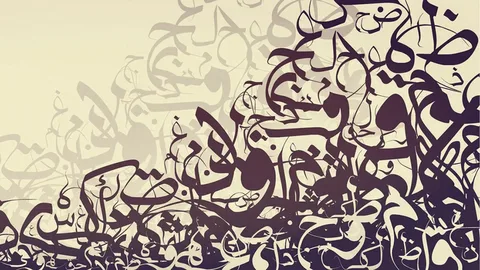where did the arabic language come from, The Arabic language, with its intricate script and rich history, has captivated linguists and enthusiasts alike for centuries. Arabic, a Semitic language, boasts a history as diverse and vibrant as the cultures it has touched. Its roots run deep, intertwining with the ancient civilizations that once graced the Arabian Peninsula. Let’s delve into the roots of this ancient language and trace its evolution over time.
where did the arabic language come from

Arabic is a Semitic language that belongs to the Afro-Asiatic language family. Its origins can be traced back to the Arabian Peninsula, where various Bedouin tribes spoke different dialects. The Quran, the holy book of Islam, played a significant role in shaping and standardizing the Arabic language.
The dialect of the Quraysh tribe in Mecca, the tribe to which the Prophet Muhammad belonged, became the basis for Classical Arabic. The Quran, believed by Muslims to be the literal word of God as revealed to Prophet Muhammad, was revealed in this dialect. As Islam spread, so did the use of Arabic, contributing to its linguistic unity.
Over time, Arabic evolved into various regional dialects and forms, including Classical Arabic, Modern Standard Arabic (used in formal settings and media), and numerous spoken dialects across the Arab world.
The spread of Islam and the cultural, scientific, and literary achievements of the Arab world during the Islamic Golden Age further solidified the importance and influence of the Arabic language in history.
Evolution over Centuries
Centuries of evolution witnessed the Arabic language adapting and absorbing influences from various civilizations, including the Babylonians, Persians, and Greeks. This linguistic metamorphosis contributed to the unique identity that Arabic holds today.
Classical Arabic
Classical Arabic, known for its eloquence and precision, played a pivotal role in shaping the language. It became the language of literature, science, and religious texts, with the Quran being a prime example of its literary significance.
Regional Dialects
The Arab world boasts a tapestry of regional dialects, each influenced by its distinct cultural and geographical surroundings. From the Maghreb to the Levant, the diversity in dialects reflects the rich mosaic of the Arab world.
Arabic Script
The Arabic script, an art form in itself, adds to the allure of the language. Calligraphy, with its intricate designs, holds cultural importance, serving as a visual representation of the beauty found in the Arabic language.
Spread of Arabic
The spread of Arabic extends beyond the Arab world, echoing through trade routes, conquests, and cultural exchanges. It became a language of commerce, diplomacy, and intellectual pursuits, leaving an indelible mark on global history.
Arabic in Modern Times
In the modern era, Arabic maintains its relevance as an official language in numerous countries. It serves as a linguistic bridge, connecting diverse communities and fostering cultural understanding.
Arabic Language Influence
The influence of Arabic extends to other languages, with numerous loanwords enriching various linguistic landscapes. This interplay showcases the language’s enduring impact on global communication.
Challenges and Preservation
Despite its rich history, the Arabic language faces challenges, including linguistic standardization and the threat of dialectical divergence. Efforts toward preservation and revitalization are crucial for ensuring its continued legacy.
Arabic Language Schools
Arabic language schools globally play a pivotal role in spreading linguistic knowledge and cultural understanding. They serve as hubs where enthusiasts immerse themselves in the intricacies of the language.
The Beauty of Arabic Poetry
Arabic poetry, with its rhythmic cadence and profound verses, stands as a testament to the language’s artistic expression. Renowned poets like Al-Mutanabbi and Al-Ma’arri have left an indelible mark on the literary landscape.
Arabic Literature and Arts
The realm of Arabic literature and arts is a flourishing landscape, encompassing diverse genres and forms. From classical epics to contemporary novels, Arabic literature continues to captivate readers worldwide.
Learning Arabic Today

Learning Arabic can open up a world of opportunities, both culturally and professionally. Arabic is the fifth most spoken language in the world, and it’s the official language in 22 countries. Here are a few reasons why learning Arabic is important:
- Cultural enrichment: Arabic is deeply tied to a rich cultural and historical heritage. Learning the language allows you to engage with literature, poetry, and traditions that have influenced the world for centuries.
- Communication: Arabic is spoken by over 300 million people worldwide. Knowing the language can enhance your ability to communicate with a diverse range of individuals, fostering connections and understanding.
- Professional opportunities: As the language of an important geopolitical region, knowing Arabic can boost your career prospects, especially if you’re interested in international relations, business, or journalism.
- Travel: If you plan to visit or work in the Middle East or North Africa, knowing Arabic can greatly enhance your travel experience. Locals often appreciate and respect visitors who make an effort to speak their language.
- Global significance: The Arab world plays a crucial role in global affairs, particularly in areas such as politics, economics, and energy. Understanding Arabic can provide valuable insights into these issues.
FAQs
Is Arabic difficult to learn for non-native speakers?
While Arabic has its complexities, with dedication and the right resources, it can be an enriching and rewarding language to learn.
How many dialects of Arabic are there?
There are numerous dialects across the Arab world, with variations influenced by cultural and regional factors.
What is the significance of Arabic calligraphy?
Arabic calligraphy is not just a form of writing but an artistic expression, showcasing the beauty of the language through intricate designs.
Are there online courses for learning Arabic?
Yes, there are many online platforms offering courses to learn Arabic, making it accessible to a global audience.
Can I learn Arabic solely for its cultural aspects?
Absolutely! Many individuals choose to learn Arabic to deepen their understanding of Arab culture, literature, and history.
Conclusion
In conclusion, the Arabic language stands as a testament to the rich tapestry of human communication. Its journey from ancient origins to modern prominence reflects the resilience and adaptability inherent in linguistic evolution. As we explore the roots, dialects, and influence of Arabic, we discover a language that not only communicates but also embodies the cultural and historical narratives of a diverse and interconnected world.


